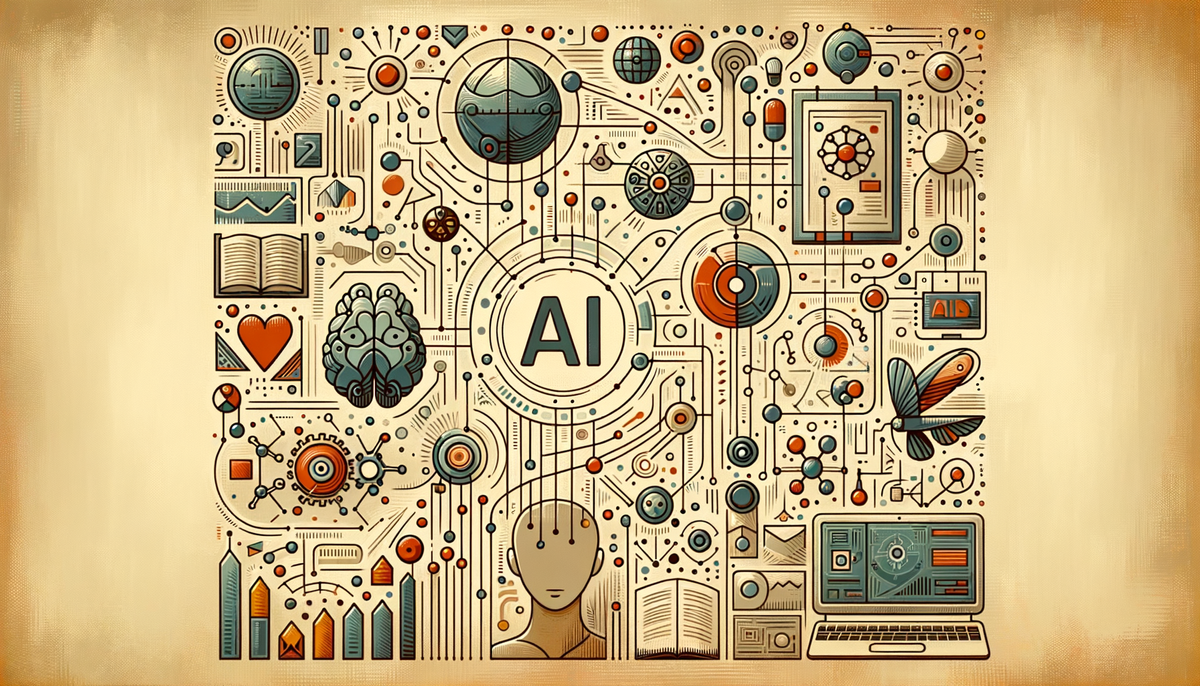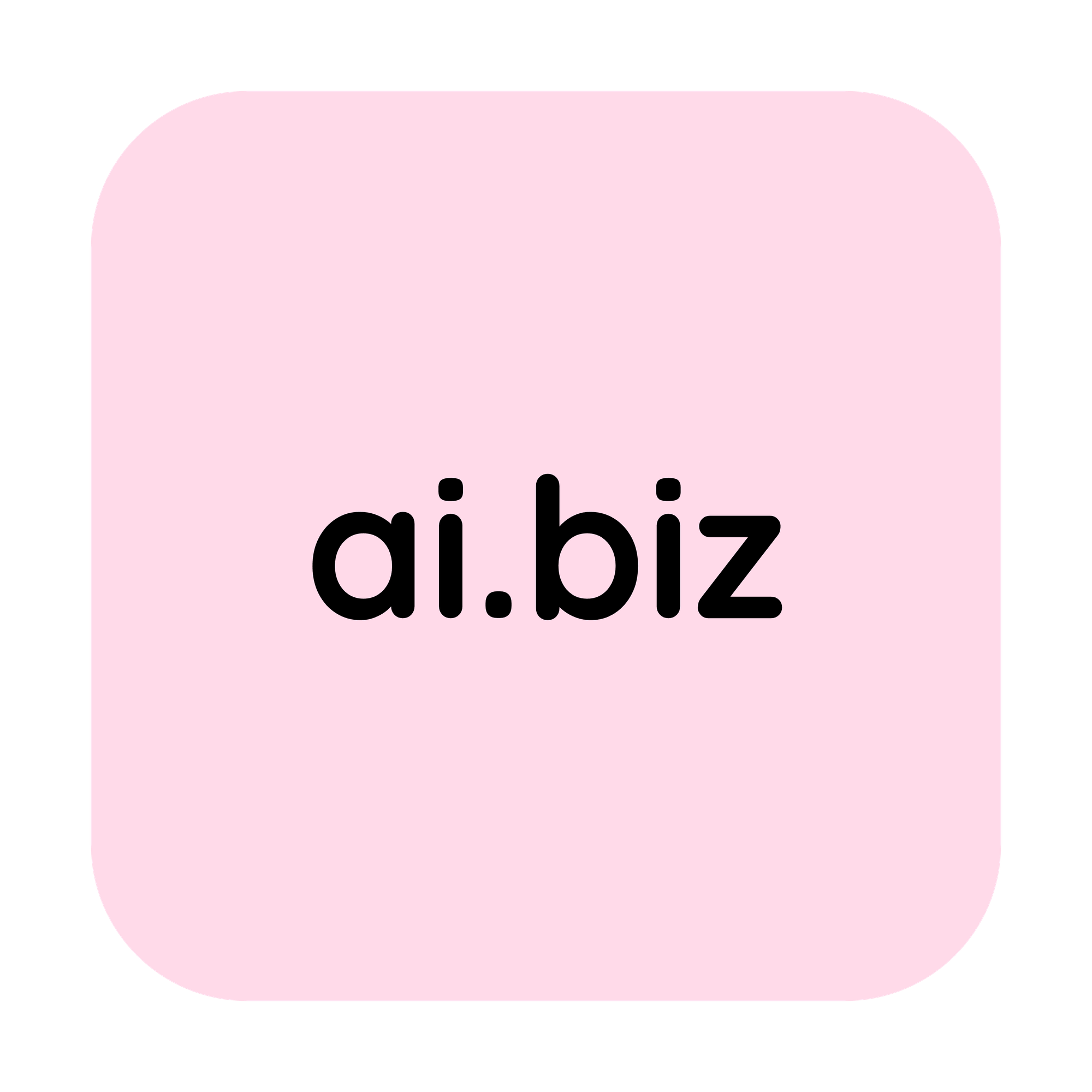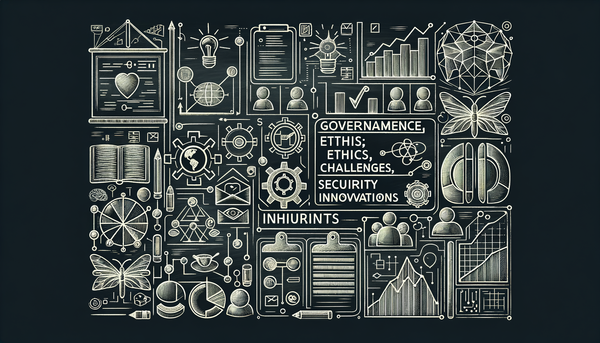AI News Podcast Update: Rethinking Talent Acquisition and AI Innovations

Netflix’s groundbreaking use of AI for visual effects, a startling study on our ability to distinguish reality from AI fabrications, and a deep dive into how sectors as diverse as healthcare, legal, and employment are reimagining their future with AI innovations set the stage for a rapidly evolving technological era.
Entertaining Innovation: AI’s Impact on Storytelling and Visual Effects
Netflix’s pioneering integration of generative AI in its series "The Eternaut" marks a bold pivot where art meets efficiency. The production team managed to create a convincingly dramatic building collapse scene in Buenos Aires in a fraction of the time and at one-tenth of the cost of traditional methods. This breakthrough not only underscores the potential for substantial cost-saving measures but also reveals new pathways for creative storytelling. While some industry voices express concern over ethical implications and job displacement from automating visual arts, proponents point to the essential role of human creativity in curating and refining AI outputs. As one creative expert noted, "The creative vision ultimately belongs with the artist even if it is amplified by technology," a perfect sentiment for an industry where technology is now a vital tool in the storyteller’s arsenal.
This transformation is reminiscent of historical moments in art where innovations—like the invention of the camera—sparked profound shifts in both artistic style and production methods. For those interested in deeper industry insights, check out our detailed update here.
Authenticity Under the Lens: Navigating the AI-Generated Image Phenomenon
In an era of hyper-realistic digital content, discerning the genuine from the AI-generated has grown immensely challenging. A study by Microsoft’s AI for Good Lab revealed that humans correctly identify real images at only 62% accuracy, barely outsmarting random chance. This profound vulnerability to artificial visuals poses pressing questions about truth in media and our collective readiness for a future where fake images evolve at a pace rivaling reality. Critically, when images of public figures or major events—the kind often showcased in viral clips—are so readily simulated, our trust in media becomes a scarce resource.
The monthly “AI or Real” quiz for May 2025 accentuates this challenge by merging celebrity culture with technological mimicry. High-profile names such as Kendall Jenner and Prince Harry are featured in AI-generated contexts, inviting participants to practice vigilance. This exercise promotes a critical mindset: always verify sources, compare with established news platforms, and reflect on how AI could obscure authenticity.
"People fear what they don't understand." — Detective Del Spooner, I, Robot
For those eager to test their skills, the “Real or Not” challenge available on the BBC website provides both a fun and cautionary experience against the backdrop of an increasingly complex digital landscape.
This dialogue on authenticity also amplifies the need for improved AI detection tools. While automated systems may already outperform human judgment in some cases, the pursuit of near-perfect detection remains a high priority. Watch as technology evolves toward that ambitious 95% detection goal, an effort that reflects the broader push for integrity in our media consumption.
Workforce and Risk: The Shift Toward Skills-First AI-Enabled Employment
As industries navigate the disruptive energies of AI, companies are increasingly forging paths toward skills-first employment models. Organizations now prioritize capabilities over traditional credentials, acknowledging that AI-augmented workflows demand a blend of technical acumen and creative problem-solving. This shift is not just about efficiency—it’s about rethinking the very fabric of talent acquisition and ensuring that AI operates as an enabler rather than a replacement.
Risk management also enters the conversation, as firms like those behind the innovative platform Fable are developing AI-native human risk management solutions. These efforts, which intertwine sophisticated data analysis with human oversight, suggest that the future of risk management will be defined by the dynamic interplay between machine intelligence and human judgment. The challenge lies in striking the balance: leveraging AI to empower employees while also safeguarding against potential vulnerabilities.
For a broader perspective on how companies are embracing these new paradigms and the ongoing conversation about AI ethics and technology, you might find our latest episode on AI Ethics and Technological Innovations very enlightening.
Advancing Healthcare: The Role of AI Training and Innovation
Healthcare stands as one of the most promising and sensitive domains poised to benefit from well-trained AI. A recent initiative, brilliantly captured in MedLearn Publishing’s piece "Leveling Up without Losing Your HIM Mind: Training for AI in Healthcare," emphasizes that perfecting AI training in medical settings is a delicate balance. For healthcare professionals, understanding and effectively integrating AI tools can lead to faster diagnostics, more personalized treatment plans, and refined patient care. Yet the real challenge lies in ensuring that AI systems are built on solid, ethical foundations and continuously updated with the latest medical research and standards.
Historically, medical innovations have continually redefined patient care—from the advent of antiseptics to modern MRI machines. Now, AI is stepping into this lineage of transformative tools. Healthcare institutions are considering comprehensive training protocols, which not only involve technical know-how but also encompass ethical and practical considerations. By fostering an environment where AI assists rather than dictates, healthcare providers can harness technology to amplify human expertise and achieve unprecedented levels of care.
In this context, it is vital to remember that AI is not a magic bullet but a powerful ally that must be nurtured and understood. As the industry evolves, continued education and transparent dialogues between tech developers and medical practitioners remain crucial.
Securing the Future: Governance, Ethics, and Legal Perspectives in AI
A sweeping review titled "Securing the Future: Exposing AI’s Benefits and Risks" reminds us that as AI technologies permeate every facet of our lives, robust governance and ethical oversight become indispensable. From safeguarding user privacy to ensuring accountability in algorithmic decisions, lawmakers and industry leaders must work together to craft frameworks that protect society without stifling innovation.
Legal arenas are also grappling with AI’s rapid expansion. A recent cautionary note from a UK judge warns lawyers about potential missteps when utilizing AI within legal proceedings. This warning underscores the pressing need for clear regulations that can navigate the gray zones where artificial intelligence intersects with law. By setting robust standards, the legal community can mitigate risk and prevent AI misuse in sensitive court scenarios.
This evolving legal landscape finds echoes in policy debates across other regions as well. For instance, New Mexico’s forward-looking discussions on its AI future highlight that local and state policies must adapt to support innovation while protecting public interests. Readers seeking further context on legislative and ethical challenges may explore our update on AI Innovations and Ethical Challenges, which provides a comprehensive analysis of these critical issues.
Illuminating Innovation: Insights from the TechCrunch Disrupt AI Stage
The AI landscape is not only defined by its challenges but also by its limitless potential, as evidenced by the dynamic presentations at TechCrunch Disrupt 2025. This marquee event gathered influential venture capitalists, visionaries, and tech trailblazers, all sharing invaluable experiences and forecasts. Panels such as "Betting on the Next Wave" and "Creative Machines and Where AI Meets Imagination" delved into AI’s transformative impact on industries. These sessions highlighted that the future of AI is as much about co-creation as it is about automation.
For entrepreneurs and investors alike, the event served as a roadmap for navigating the intricate dynamics of AI funding, infrastructure, and ethical considerations. Discussions on topics like generative content, robotic autonomy, and even the nuanced role of AI in personal relationships (aptly framed in the "Love, Lies & Algorithms" session) reaffirmed that innovation thrives on diverse applications and bold thinking.
One panelist, echoing the sentiment of renowned AI pioneer Fei-Fei Li, remarked, "If our era is the next Industrial Revolution, as many claim, AI is surely one of its driving forces." This perspective resonates deeply at a time when startups and established companies must adapt quickly to maintain a competitive edge. For those eager to dive even deeper into the conversations shaping the future of technology, the comprehensive report on the event from TechCrunch offers a wealth of insight. Visit the detailed coverage here.
Reflections and Forward Momentum
The tapestry of AI innovations weaved through these recent developments—from reimagining Hollywood visual effects to rethinking legal ethics and healthcare training—paints a vivid picture of a world in flux. Whether it's the challenge of differentiating between AI-generated and real images or the nuanced dance between human insight and machine efficiency, we are witnessing a profound period of transformation.
As industries continually adopt these technologies, the narrative remains consistent: human talent combined with AI potential can catalyze progress across sectors. This unfolding journey reminds us of a timeless truth, echoed by a character from A.I. Artificial Intelligence: "The greatest single human gift - the ability to chase down our dreams." It is this spirit that should animate our approach to AI integration.
For those looking to explore more radical shifts in today's AI landscape, consider catching up on our recent episodes detailing updates on innovations, challenges in post-human AI governance, and further ethical discussions here and here. Each update reflects the multifaceted nature of AI—its promise, perils, and the perpetual interplay of risk and opportunity.
Further Readings
- AI Innovations Challenges
- AI Innovations Ethical Challenges Update
- AI Ethics, Technology, and Innovations Podcast
- Exploring Transformative Developments in AI
- Netflix Uses AI Effects for First Time to Cut Costs on BBC
- TechCrunch Disrupt 2025 AI Stage Overview
- Microsoft AI for Good Lab Study on AI Image Detection
- The monthly AI or Real Quiz on BBC Bitesize
Final Thoughts
These transformative updates illustrate that innovation is not a monolithic force but a multifaceted one that fuels creativity, demands accountability, and challenges us to rethink our perceptions. As we continue to navigate a landscape where the line between human ingenuity and artificial execution increasingly blurs, we are reminded of the indomitable human spirit to adapt, learn, and ultimately thrive.
It is in this spirit of constant evolution that we should embrace these developments—not with trepidation but with curiosity and resolve to shape a future where technology serves humanity.




